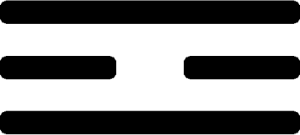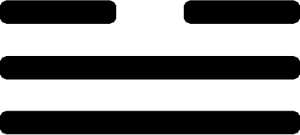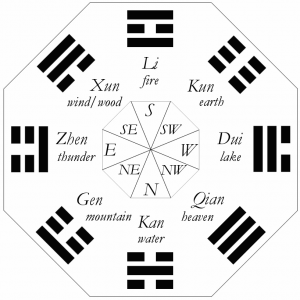As you know, each hexagram is made of two trigrams. The lower three lines form the ‘lower’ or ‘inner’ trigram, the top three the ‘upper’ or ‘outer’ trigram. Since the trigrams represent fundamental ways energy moves, their interactions create new layers of meaning in the hexagrams.
A quick example…

Fire, the energy of life and awareness, naturally flames up:
The reflective, cheerful lake tends to rest or sink downwards:

When the lake is below the fire (‘inner trigram lake, outer trigram fire’) –
– then you have Hexagram 38, Opposition, with the two forces living together, but constantly pulling apart.
But if the two trigrams are reversed, so that the fire’s rising up towards the lake (‘inner trigram fire, outer trigram lake’)-
– then the result is Hexagram 49, Radical Change. The two opposed energies interact, clear inner vision comes to expression, and the result is revolutionary.
In the text you normally see associated with a hexagram, it’s the ‘Image’ that describes the component trigrams and how a wise person might work with those energies:
‘In the centre of the lake there is fire. Radical Change.
A noble one reckons the heavenly signs and clarifies the seasons.’
Now you’re familiar with all the working parts of the I Ching – the lines, their change, the trigrams – you’re ready to put a question to the oracle.
Apply: real-world trigrams
Give yourself 60 seconds to look up from the screen and see which of the trigrams you can recognise around you – or inside you –
No ‘right answers’ for this one!









